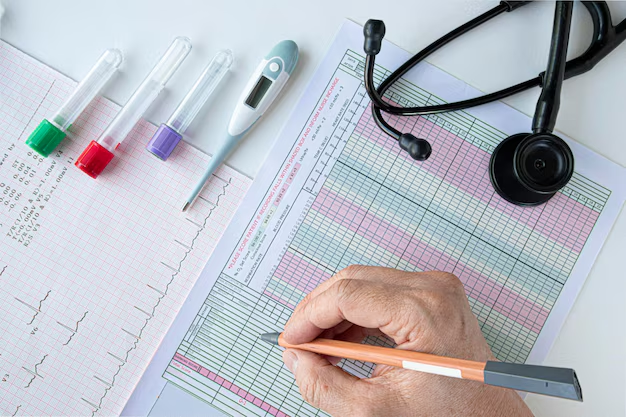Understanding Cancer: How Many People are Affected and What It Means for You
Cancer is a word that strikes fear and uncertainty in the hearts of many. It is a complex set of diseases, each with its own characteristics, yet all fitting under one dreaded umbrella term. But what percentage of people get cancer? And what do these figures mean in terms of understanding cancer risks and taking preventive steps? Let's delve into the answers, breaking down the statistics to make sense of this widespread concern.
Grasping the Basics: What Are the Chances of Getting Cancer?
One of the most frequently asked questions is how likely it is for someone to develop cancer over their lifetime. According to various research studies, about 39.5% of men and women will be diagnosed with cancer at some point during their lifetime. This translates to roughly 1 in 3 people, illustrating the significant impact cancer has on society as a whole.
A Closer Look at the Percentages
Gender Differences: Men and women both face significant risks, but there is a slight difference in prevalence. Men are slightly more likely to be diagnosed with cancer than women.
Age Factor: Age is a strong determinant. As people age, the likelihood of developing cancer increases. Most diagnoses occur in those 50 and older, with a steady incline in risk as age advances.
Geographical Influence: Different regions see variations in cancer prevalence due to lifestyle, environmental factors, and screening availability.
Diving Deeper: Why Do So Many People Get Cancer?
To better understand why these statistics are what they are, it's important to explore the factors contributing to cancer prevalence.
Genetic and Environmental Factors
Genetics: Family history and genetic predispositions can significantly affect one's cancer risk. However, not all genetic predispositions lead to actual cancer development.
Lifestyle: Factors such as smoking, diet, physical activity, and alcohol consumption play a crucial role.
Environmental Exposure: Exposure to harmful chemicals, radiation, and sun can increase cancer risk.
Advances in Diagnosis and Reporting
Improved screening methods and greater awareness often lead to a higher number of diagnoses. This is not necessarily indicative of more actual cases, but rather better detection rates.
Navigating Different Types of Cancer
While "cancer" is often discussed as a singular entity, it encompasses over 100 different diseases, with varying prevalence rates.
Common Cancer Types
Breast Cancer: One of the most common cancers among women, but also occurs in men.
Prostate Cancer: Common among older men, it's known for its high survival rate when caught early.
Lung Cancer: Often linked to smoking, but also found in non-smokers.
Colorectal Cancer: Screening improvements have made early detection more common, improving outcomes.
Less Common but Noteworthy
Some cancers, such as pancreatic and ovarian cancer, are less common but can be more aggressive and challenging to treat.
Taking Charge: Reducing Your Cancer Risk
Awareness is the first step in cancer prevention. Although risk factors like age and genetics are non-modifiable, lifestyle modifications can have a profound effect on personal risk.
Practical Steps to Consider
Quit Smoking: Smoking is linked to more than a dozen cancer types.
Healthy Diet: Eat a diet rich in fruits, vegetables, and whole grains.
Exercise Regularly: Aim for at least 150 minutes of moderate aerobic activity a week.
Limit Alcohol: Reducing alcohol intake lowers your risk.
Sun Protection: Use sunscreen and protective clothing to minimize UV exposure.
Regular Screenings: Early detections through screenings like mammograms and colonoscopies can significantly improve outcomes.
What the Future Holds: Research and Hope
Research is continuously evolving, offering hope for new prevention, detection, and treatment methods. Advances in genetics, immunotherapy, and precision medicine are part of an optimistic future that could significantly impact cancer statistics.
The Role of Technology
Artificial intelligence and big data are being employed to predict cancer trends and customize patient treatment plans, making them more effective than ever.
Community and Support
Cancer impacts not just individuals but families and communities. Support networks play a crucial role in providing emotional and practical assistance.
Wrapping It All Up: The Big Picture
Understanding the statistics around cancer can be an empowering tool in addressing this major health challenge. While the numbers can be sobering, they are also a call to action for prevention and early detection. With advancements in research and health practices, there's hope and actionable strategies for reducing risks and improving quality of life for those affected.
Key Takeaways on Cancer Risks and Prevention:
📊 Lifetime Risk: About 39.5% of people will be diagnosed with cancer — that's nearly 1 in 3.
👥 Gender: Men face a slightly higher risk than women.
🧬 Influences: Genetics, lifestyle, and environment play significant roles.
🥗 Prevention Tips: Quit smoking, maintain a healthy diet and exercise regularly.
🕶️ Sun Safety: Protect against UV rays.
🔍 Screenings: Regular check-ups improve chances of catching cancer early.
🔬 Research: Ongoing advancements promise better detection and treatment.
By being informed, we can make steps towards reducing the risk for ourselves and our loved ones, leading to brighter prospects in a world where so many lives are touched by cancer.

Related Articles
- Are Breast Cancer Lumps Painful
- Are Chills a Sign Of Cancer
- Are Colon Spasms a Sign Of Cancer
- Are Lytic Lesions Always Cancer
- Are Polyps Cancer
- Can a Blood Test Detect Cancer
- Can a Ct Scan Detect Cancer
- Can a Dexa Scan Show Cancer
- Can a Gastric Emptying Scan Show Cancer
- Can a Lung Biopsy Cause Cancer To Spread